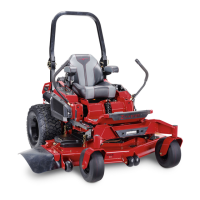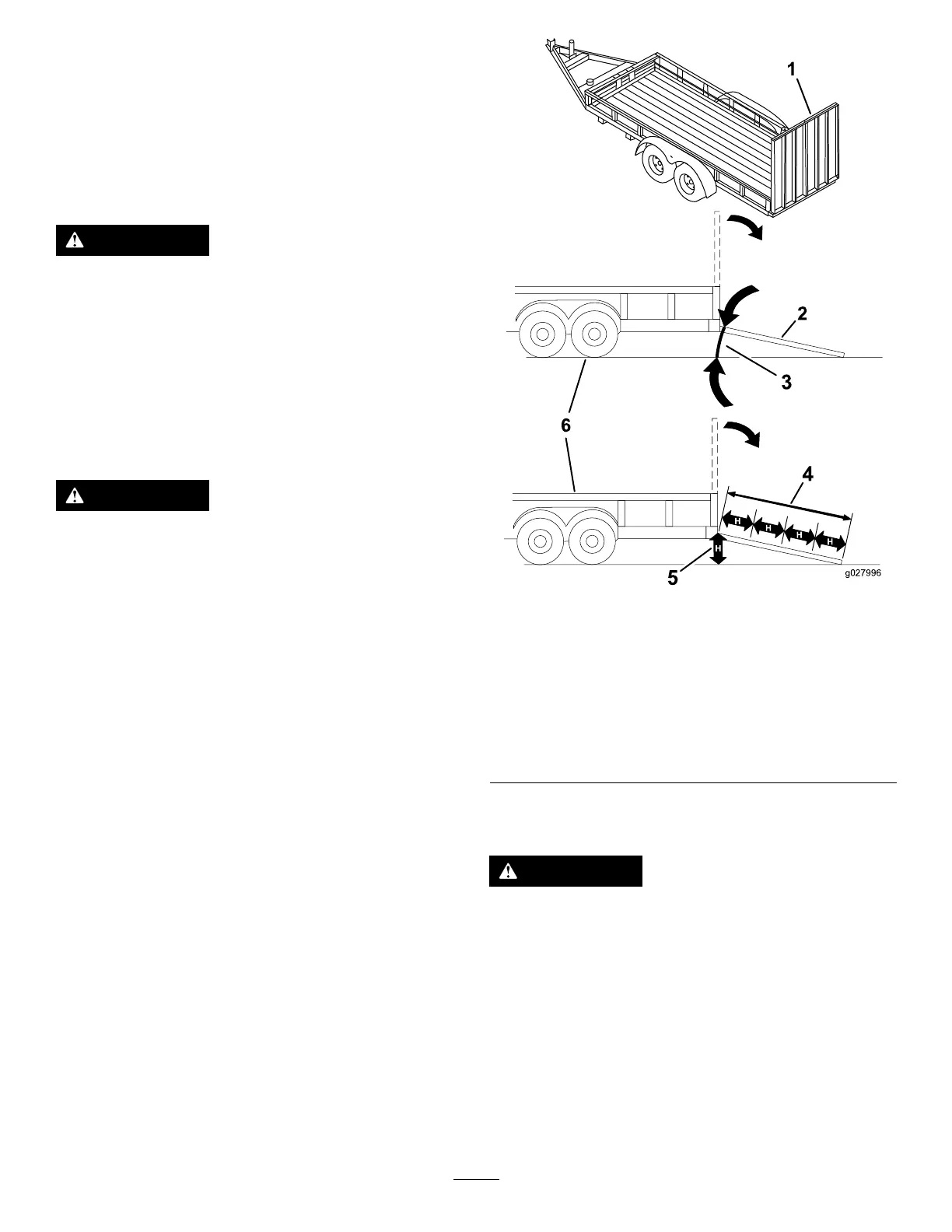T ransporting the Machine
Use a heavy-duty trailer or truck to transport the
machine. Use a full-width ramp. Ensure that the trailer
or truck has all the necessary brakes, lighting, and
marking as required by law . Please carefully read all
the safety instructions. Knowing this information could
help you or bystanders avoid injury . Refer to your
local ordinances for trailer and tie-down requirements.
W ARNING
Driving on the street or roadway without
turn signals, lights, reective markings, or a
slow-moving-vehicle emblem is dangerous
and can lead to accidents, causing personal
injury .
Do not drive the machine on a public street
or roadway .
Selecting a T railer
W ARNING
Loading a machine onto a trailer or truck
increases the possibility of tip-over and could
cause serious injury or death ( Figure 41 ).
• Use only a full-width ramp; do not use
individual ramps for each side of the
machine.
• Do not exceed a 15-degree angle between
the ramp and the ground or between the
ramp and the trailer or truck.
• Ensure that the length of the ramp is at
least 4 times as long as the height of the
trailer or truck bed to the ground. This
ensures that the ramp angle does not
exceed 15 degrees on at ground.
g027996
Figure 41
1. Full-width ramp in stowed
position
4. Ramp is at least 4 times
as long as the height of
the trailer or truck bed to
the ground
2. Side view of full-width
ramp in loading position
5. H=height of the trailer or
truck bed to the ground
3. Not greater than
15 degrees
6. T railer
Loading the Machine
W ARNING
Loading a machine onto a trailer or truck
increases the possibility of tip-over and could
cause serious injury or death.
• Use extreme caution when operating a
machine on a ramp.
• Back the machine up the ramp and drive it
forward down the ramp.
• A void sudden acceleration or deceleration
while driving the machine on a ramp as
this could cause a loss of control or a
tip-over situation.
35

